The buses dominate China
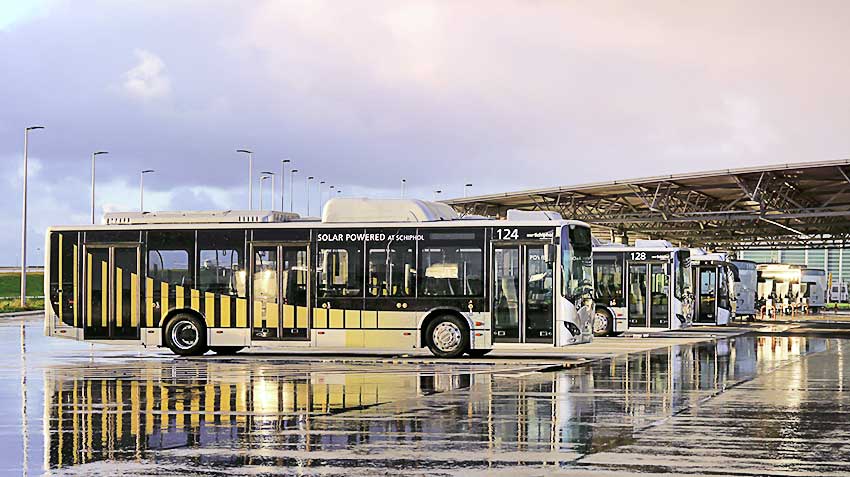
In 2017, China is systematically increased the production of buses on alternative fuel

Production of the buses (there is a segment of bus chassis, but on below) in General for the 2017 decreased by 2.5% to 479,7 thousand Of them on a diesel car had to 288,2 thousand or exactly 60%
(in 2016 and 282 thousand and 57,3%), and electric bus – 97.1 thousand or 20.2% of respondents (87,5 thousand and 17,8%), on diesel buses and 70.8 thousand or 14.8 per cent (97.7 per thousand, and 19,9%), and rechargeable hybrid buses – 12,7 thousand and 2,6% (16.5 thousand, or 3.4%), and gas – 10.7 per thousand and 2.1 per cent (7.8 thousand, and 1.6 percent). In addition, on fuel cell, i.e. hydrogen (H2), there were 130 units of buses, compared to only
2 cars in 2016 and that's non-hybrid buses has fallen in 4.3-fold to 61 units. that just says about that their "goose is cooked". Sharply reduced the production of small gasoline buses, and also a rechargeable hybrid (PHEV) vehicles. The share of diesel buses and electric buses is growing, also like gas cars to methane.
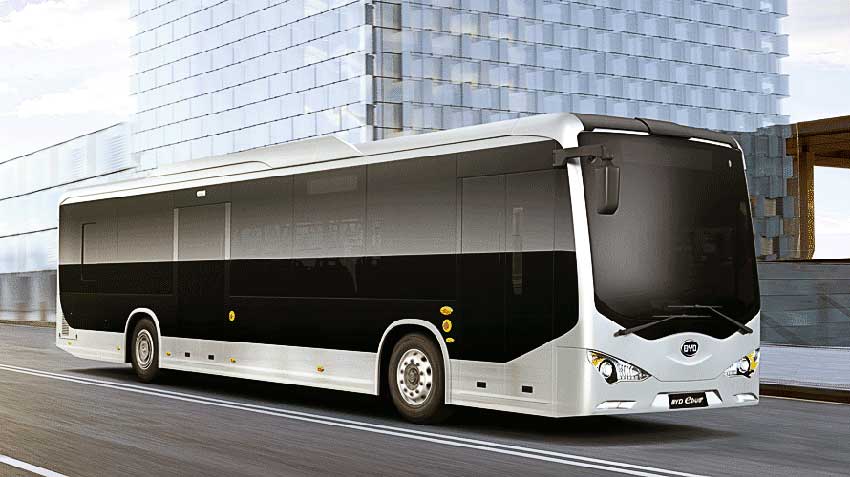
The appearance of the urban transport future now define precisely the Chinese buses
(teaser on the e-bus of BYD brand)
Production of large buses (more than 10 meters in length) increased by only 4.1% to 93,2 thousand Of the most of them are already accounted for electric bus – 43,4 million (+24,5%) with a share of 46.5% versus 34.8 thousand (share of 38.9%) from a year earlier, and a diesel car was 33.3 million (-9,7%) with a share of 35.7% (36.9 thousand, the share of 41.2%). The release of rechargeable hybrids, fell by almost a third (-32,6%) to 9.2 thousand, and cylinder, on the contrary, increased by 84,8% to 7,3 thousand that is obviously associated with changes in the tax benefits. On fuel cells made by one machine. As a year earlier, i.e. "hydrogen" buses in a big class yet of the stage of the experiment does not come out. Fun look 38 units of large gasoline buses (immediately reminded of the domestic LiAZ-677), however, most likely here is the place to be bi-fuel scheme, i.e., data buses are designed to work on propane-butane and gasoline, and pass to statistics, it is
both gasoline as Dobroudja gas equipment for outside of the factory.
The at least, we can say that in a large class of electric buses and gas power plant rather rapidly displace all other types in history. However, in the near future, for sure, to prove themselves able and hydrogen fuel cells.
According to the types of large buses are divided into city (55.5 million +9.4 percent), intercity (27.9 thousand -8,2%), travel (9 THD +17,1%), school (581 units +8.8 per cent), special (275 units +67,7%) and apron (10% -73%).

Electromotives BYD K7
In the segment of medium-sized (8,5–10 m and up to 60 passengers) buses, the decline was 12.4%
to 72,4 thousand due to the shift in demand for more spacious big cars. This applies to all types of power plants. So, the buses only ran 31.6 thousand (by 14,9%) against
37.1 thousand a year earlier (the share of 43.6 per cent against 44.9 per cent). Diesel midibuses made 30,2 million (-17,8%), as compared to 36.8 million (the share of 41.8% vs 44,6%). Rechargeable hybrid midibuses released
3.16 thousand (+10,5%) against of 2.86 million (the share of 4.4% against 3.5%). Non-hybrids in this class, not at all, but machines fuel cell units 31 are made against one year earlier. On the methane released 2.6 million (-5,7%) compared to 2.76 thousand, and on the gasoline of 4.74 million (+56,4%) – obviously,
statistics and not here reflects the bi-fuel power plant zaschitila them for petrol.
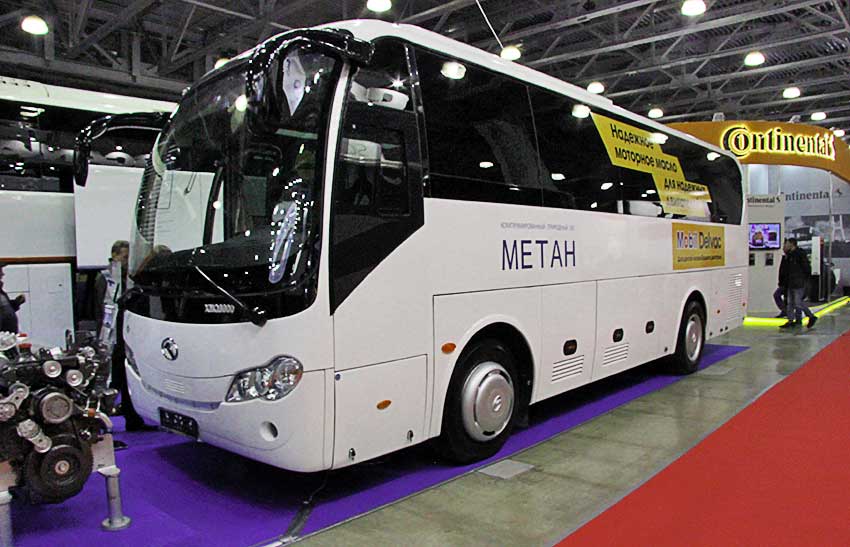
NGV buses from China conquer not only the local market but and develop the export potential of the industry (photo midliner King Long CNG XMQ6900 on the exhibition Bussworld-2016)
By types of medium buses share large car model city (37,8 thousand USD 11.8%), trunk (20.1 thousand -14,7%), tourism (2.5 million -46,2%), school (5.4 thousand -11,4%), special (2.29 thousand -4,9%) and"other" (4,34 thousand +39.9 per cent).
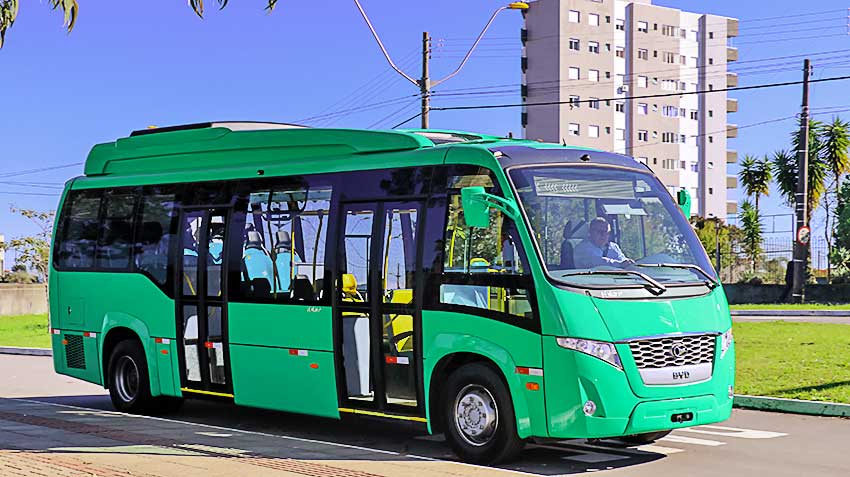
Electricities BYD Volare Access
The segment of small buses or minibuses (6-8 m high and up to 20 passengers) is much more massive. Here the decline was 1.7% to 314,1 thousand, where the lion's share falls on diesel models 224,7 thousand (+7.9 per cent). On the second place – petrol models (66 thousand, for 30.2% share of 21%) the majority of which, indeed, are equipped with gasoline engines, although bi-fuel are also present. On third place minielectric with growth of 42.5% to versus 15.6 22.2 thousand thousand a year earlier (the share of, respectively, 7.1 per cent and 4.9 per cent). The share of LPG cars (761 units and -30,8%) fell to 0.2% vs. 0.3% in 2016. It is in 2017 began production of rechargeable hybrids (299 units) and menelectronic on fuel cells (98 units), which are still almost managed to oust the hybrids are common (61 units 67 units).
According to the types of small buses and vans are divided into the urban model (38.4 thousand KZT20. 2%), intercity (23 thousand -7,8%), travel (7.8 thousand, -32,7%), school (7.6 thousand, -21,7%), "move" (vol.without trim) – 635 units (-60,5%), and also special (42,5 thousand,+57,2%) and"other" (194,1 thousand, -1,3%).
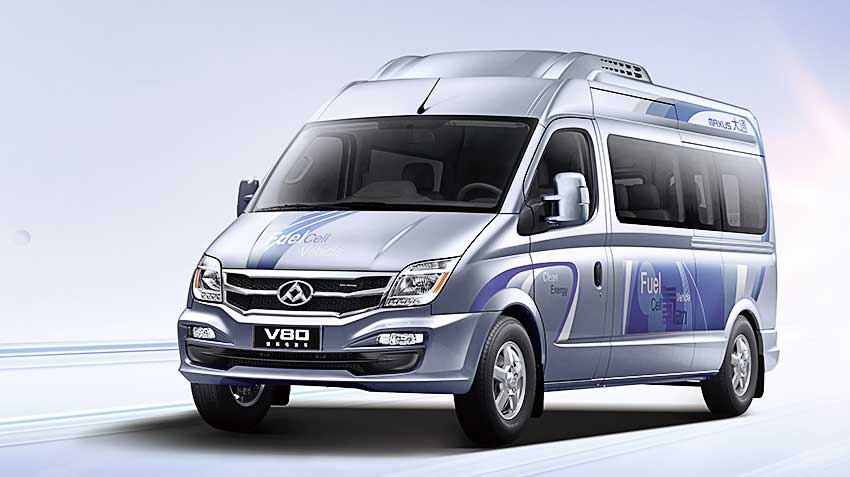
Minibus to hydrogen fuel cell Maxus V80 Fuel Cell still went to series 2017
Interesting position for bus chassis: their output in General for the 2017 decreased by 16%
to 46,4 thousand Of them diesel chassis had to 36.7 million or 79,2% (in 2016 – 51.4 thousand, or 93%), the elektrobosna chassis 8.4 million or 18.1 per cent (of 3.04 thousand or 5.5 percent), and to gas chassis – 981 units or 2,1% (706 units or 1,3%).
Landing gear for large buses has fallen by more than in 17 times or to 94.2 percent (to 40, against 694 units in the previous year) that is obviously associated with the complexity of rules of certification for third – party to provide adequate security for the buses do not so simple. It's funny what a big elektrobosna chassis produced more – 25 units (2016 and 127 units) against 15 units (457 units) conventional diesel. And now the issue of LPG chassis (methane) large class is minimized (in 2016 and 110 units).
In the production of chassis for mid-size buses total fell by 22.2% to 12.8 thousand, including 8.7 thousand diesel (-36,2%), 3,71 thousand elektrobosna (+42,2%) and 321 units of gas (an increase of almost 3 times).
In the production of chassis for buses of small overall decline was 11.9%
to 33,6 thousand, including 28 thousand diesel (-24,8%), of 4.67 thousand elektrobosna (an increase in 15 times) and 660 cylinder units (+35.5 percent).
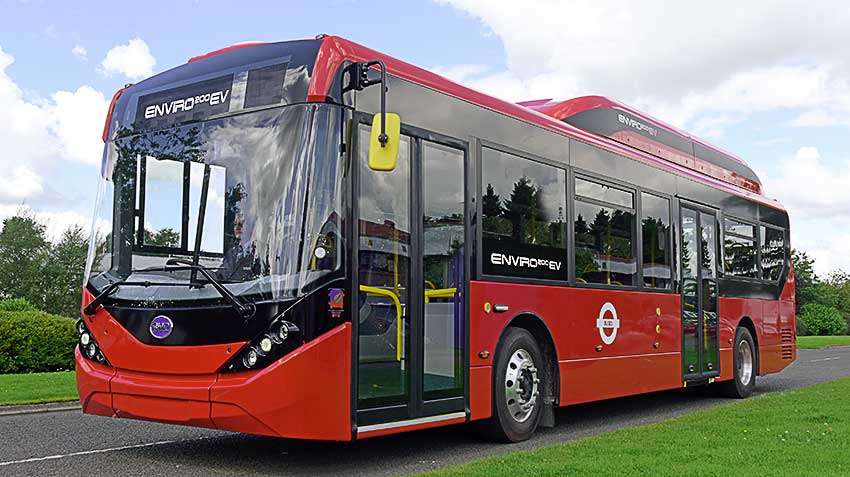
Chinese electric buses exploding in Europe (photo of model BYD-Dennis Enviro200EV)
Thus, the main trend in the production of Chinese buses in 2017 was the transition to the buses (especially in big small classes), and also on car for natural gas (methane), although the latter is not been comparison with buses. In General, "alternative" buses already make up 25.1% of output, i.e., every fourth new bus in China is no longer uses only diesel fuel and gasoline, although about 5% are still intended for gas the use of hydrocarbon fuel in hybrid power plants. Naturally, such a strongly growing domestic production of advanced electric buses not can not to splash out on export markets. For example, four of the London route are served by the Chinese buses double deckere brand BYD.
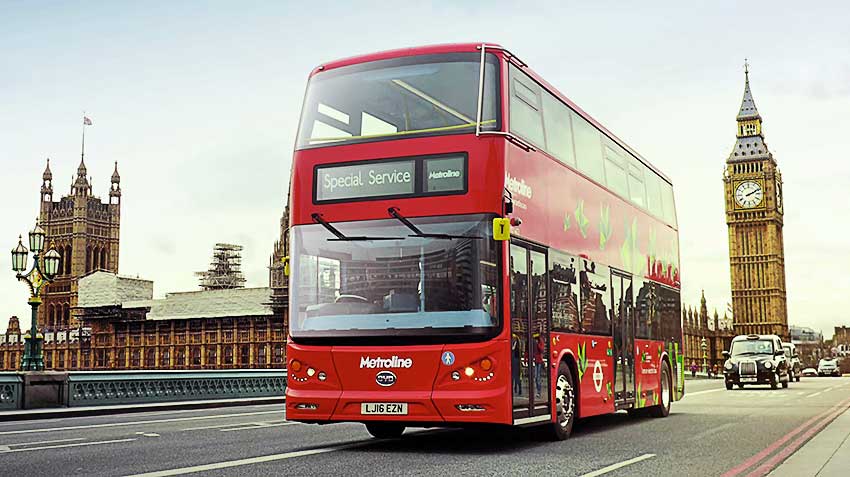
The first in the world electric bus double-Decker BYD with a length of 10.2 m can carry up to 81 passengers (54 seats for the seat).
The reserve is 305 km and allows you to move 24 hours in a day
|
|
|








